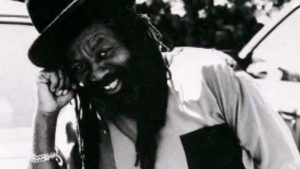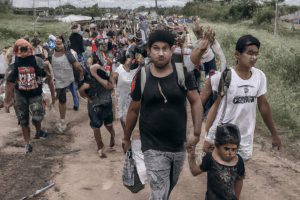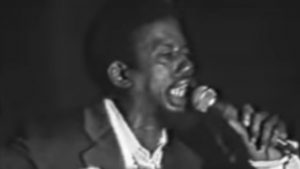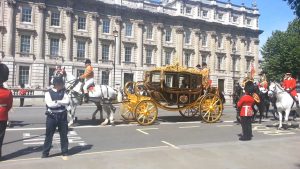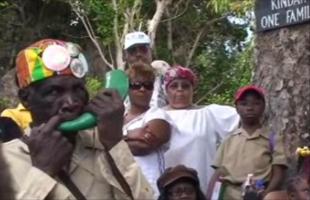 Freedom fighters who escaped the Spanish, defeated the British and became the first liberated Africans in the Western Hemisphere. That’s the story in a nutshell of the Maroons of Jamaica who are being celebrated in the documentary, Akwantu: The Journey, by stuntman turned writer, producer and director Roy T. Anderson.
Freedom fighters who escaped the Spanish, defeated the British and became the first liberated Africans in the Western Hemisphere. That’s the story in a nutshell of the Maroons of Jamaica who are being celebrated in the documentary, Akwantu: The Journey, by stuntman turned writer, producer and director Roy T. Anderson.
It is appropriate that the feature length documentary, premiering as Jamaica perpares to celebrate its 50th anniversary of independence from Britain, August 6, 2012, is being debuted not just in the cradle of maronage but in major metropoles as well.
When Admiral William Penn and General Robert Venables in 1655 seized Jamaica from the Spanish, the island had a population of about 3,000, equally divided between Spaniards and the enslaved Africans, most of the indigenous Tainos having been eliminated by the conquerors.
Some historians say these Africans were armed and released by the Spanish as part of their resistance to the invaders. These Africans, allegedly with remnants of the native people, moved to the mountains and began their fight against the British.
The Maroons fought British colonists to a stalemate and eventually signed treaties in the 18th century that freed them and conferred land rights half a decade before the abolition of the slave trade in 1807.
Over time the original Maroons grew as they were joined by Africans who escaped from the British, despite agreements with the British that they would return or help hunt down runaways, and communities were established in different mountain areas.
Although the 1962 Jamaica Independence Constitution did not grant any autonomy to the Maroons, they maintained some land privileges and some of their social and political structures, and still elect ‘colonels’ as heads of the different communities.
While they are dispersed through the local society, there are still concentrations in original settlements such as their largest town, Accompong, in Jamaica’s southwestern parish of St. Elizabeth, with a vibrant community of about 600 people.

The impact of the Maroons was not limited to Jamaica. A band of about 600 was deported to Nova Scotia in Canada. On 26 June 1796, the Dover, Mary, and Anne sailed from Port Royal Harbour, Jamaica to Halifax with total 543 men, women and children.
They were welcomed by the authorities who were impressed by their industriousness and bearing but after one winter, the Maroons were discontented with their location. It was decided to send them on to Siera Leon to populate the British colony but by 1841, many of the remaining Maroons in Freetown returned to Jamaica as workers on plantations after the abolition of slavery caused labour shortages on the sugar estates.
Akwantu writer-producer Anderson is from the farming village of Ridge Pen, one of the outlying communities of Accompong and electricity has not yet come here although Black River, the capital of the parish received the utility in the 19th century, ahead of New York City.
It was this setting that was transformed for a “homecoming” showing of the documentary. About 60 men, women and children joined celebrities gathered as sunshine flickered neon-like through the webbing of tall coconut palms that supplied the green ‘carpet’ they walked for the occasion.
The Homecoming Screening, was part of the reunion of Anderson’s Rowe family who hosted and organized the event. Many family members were present including Adisa S. Oji of MACPRI, Founder of Oware Canada, who also served as the documentary’s chief stills photographer.
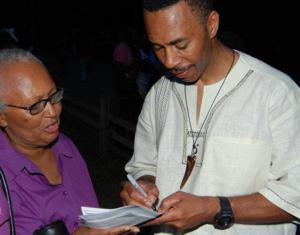
On Friday, June 22, 2012, the world premiere screening of Akwantu took place at Asafu Yard, Charles Town, Portland, Jamaica, in association with the Charles Town Maroon Council, the Institute of Jamaica, and the Jamaica Social Investment Fund.
In attendance were Colonel Frank Lumsden, of Charles Town, and other leaders of Jamaican maroon communities, at what was billed as the “Night of the Ancestors,” that was held in conjunction with the Fourth International Maroon Conference then underway.
Lumsden, whose art is featured in the documentary, was a resource person on the production along with Jamaican, African, American and Canadian academics.
Anderson is a movie stuntman who has worked with the likes of Will Smith, Denzel Washington and Jamie Foxx, among others.
The Action 4 Reel Filmworks, LLC production team included co-producer Alison G. Anderson, associate producer Edward Washington, editor Mike Nero, sound designer and composer Rolando Gori, and animations creative director Vineet Verma. Consultant for the project was Harcourt T. Fuller.
Akwantu was filmed on location in Jamaica, with takes in Ghana and the USA.
For more on Akwantu, you may visit the film’s site here.





